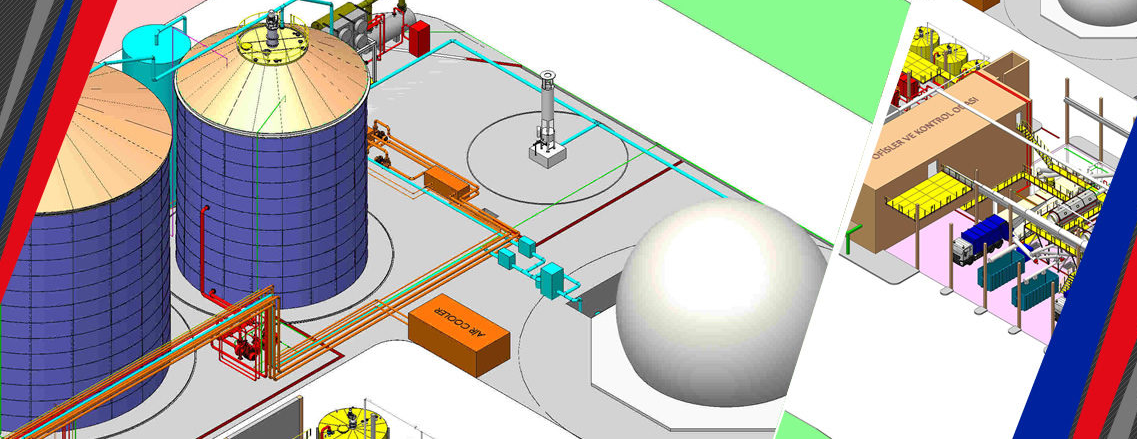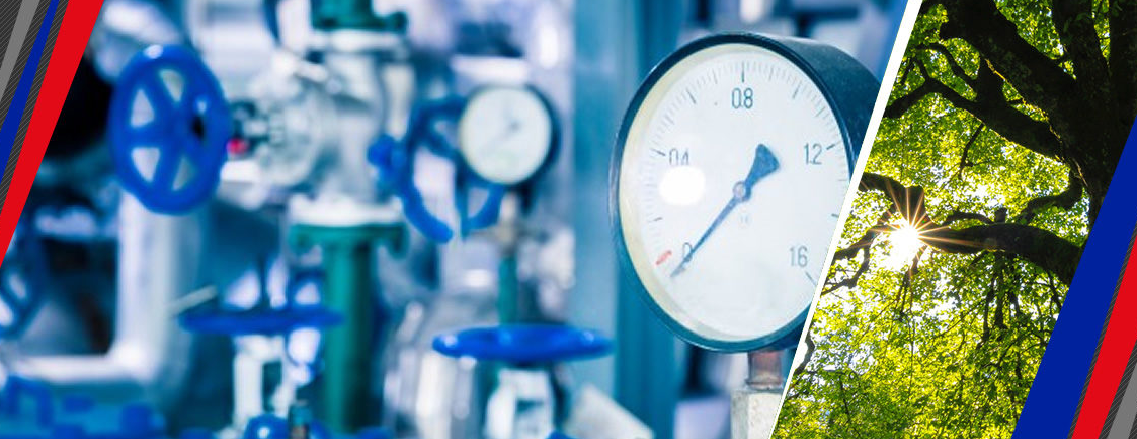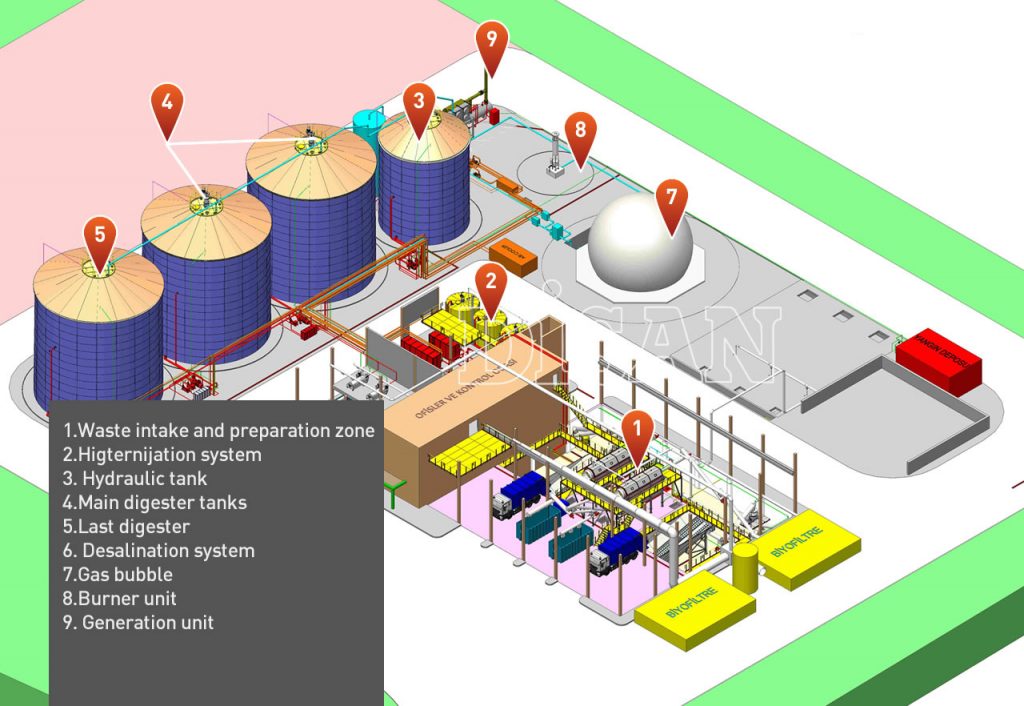BIOMETHANIZATION PLANT
Biomethanization process is the gasification process by simulating the wet / dry natural decomposition environment of the organically degradable part of domestic wastes, animal wastes, farm wastes and industrial wastes in a dry / airless environment. The reason for the evaluation of organic wastes in biometanization facilities is to extend the life of the waste disposal sites (landfills), to reach green energy without producing any major pollutants, to provide the return of products other than biogas to the soil (compost and liquid fertilizer), to produce energy that can be used in different ways than biogas, to create green and economic values from organic wastes In short, biomethanization facilities are the shortest way with today’s technology to send what comes from soil back to soil.
Pretreatment and digestion systems vary according to the types of wastes to be accepted in biometanization plants. The general equipment of the facilities that have been established and will be established until today can be listed as follows;
– Waste reception and feeding system,
– Disintegration system (reduction of the size of the particules for the purpose of increasing the surface area in order to increase the biological activities of organic wastes),
– Waste heating (adjusting the working temperatures of the bacteria to accelerate biological decay), digestive system (wet system is the result of liquefaction of organic wastes, dry system is to allow the wastes to decompose by heating in a solid state without oxygen
– Dewatering system (It is the system that allows organic waste to leave the system in liquid or solid form as needed at the end of the system exit).
– Gas cleaning and recovery system (dehumidification of the gas to increase the combustion capacity of the gas, cleaning of the gas from polluting components),
– Converting the produced gas into energy (Obtaining electricity and thermal energy by burning in gas engines, gas liquefaction and liquid fuel production (CNG))
The main factors in the design of the facilities are the type, biological and physical values of the product to be fed to the facility. As a result of these values, the equipment to be used and the digester system can be selected.
Biogas from Organic Solid Wastes (Food Wastes, Vegetable-Fruit Wastes, Past Expired Packaged Food Wastes) is obtained by fermentation method in anaerobic environment and converted to electrical energy by Biometanization facilities
















